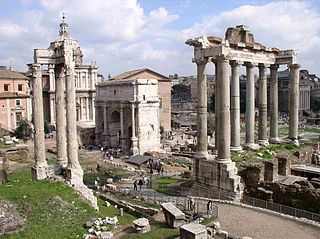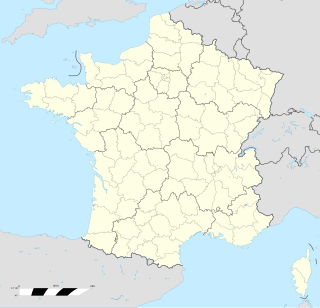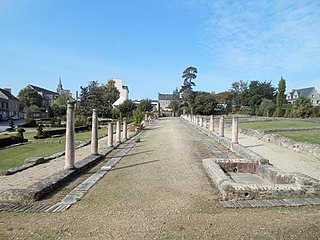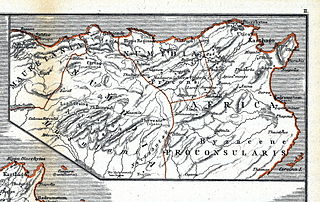Ksour-el-Maïete is a set of ruins in Tunisia near the Cherita and the Sebkhet de Sidi El Hani lakes.

Ruins are the remains of human-made architecture: structures that were once intact have fallen, as time went by, into a state of partial or total disrepair, due to lack of maintenance or deliberate acts of destruction. Natural disaster, war and population decline are the most common root causes, with many structures becoming progressively derelict over time due to long-term weathering and scavenging.

Tunisia (officially the Republic of Tunisia) is a country in the Maghreb region of North Africa, covering 163,610 square kilometres. Its northernmost point, Cape Angela, is the northernmost point on the African continent. It is bordered by Algeria to the west and southwest, Libya to the southeast, and the Mediterranean Sea to the north and east. Tunisia's population was 11.435 million in 2017. Tunisia's name is derived from its capital city, Tunis, which is located on its northeast coast.

The Sebkhet Cherita is a salt lake wetland in the Sousse Governorate of Tunisia, 25 kilometers southwest of the city of Sousse and 25 kilometers southeast of the city of Kairouan. It covers an area of 11600hectares and is 17 by 9 kilometers wide. Fueled by several wadis, such as the Oued Merguellil, Oued Nebhana and Oued Zeroud.
The ruins date from the Roman Empire and are tentatively identified as a station on the Roman Road from Althiburos To Thysdrus. [1] According to one interpretation of the Antonine Itinerary, [2] it is the site known in the Roman era as Germaniciana.

The Roman Empire was the post-Roman Republic period of the ancient Roman civilization. Ruled by emperors, it had large territorial holdings around the Mediterranean Sea in Europe, North Africa, the Middle East, and the Caucasus. From the constitutional reforms of Augustus to the military anarchy of the third century, the Empire was a principate ruled from the city of Rome. The Roman Empire was then ruled by multiple emperors and divided in a Western Roman Empire, based in Milan and later Ravenna, and an Eastern Roman Empire, based in Nicomedia and later Constantinople. Rome remained the nominal capital of both parts until 476 AD, when Odoacer deposed Romulus Augustus after capturing Ravenna and the Roman Senate sent the imperial regalia to Constantinople. The fall of the Western Roman Empire to barbarian kings, along with the hellenization of the Eastern Roman Empire into the Byzantine Empire, is conventionally used to mark the end of Ancient Rome and the beginning of the Middle Ages.

Althiburos was an ancient Berber, Carthaginian, and Roman settlement in what is now the Dahmani Delegation of the Kef Governorate of Tunisia. During the reign of emperor Hadrian, it became a municipality with Italian rights. It was the seat of a Christian bishop from the 4th to 7th centuries. The settlement was destroyed during the Muslim invasions and the area's population center moved to Ebba Ksour on the plain. This left Althiburos's ruins largely intact; they were rediscovered by travelers in the 18th century.

Thysdrus was a Carthaginian town and Roman colony near present-day El Djem, Tunisia. Under the Romans, it was the center of olive oil production in the provinces of Africa and Byzacena and was quite prosperous. The surviving amphitheater is a World Heritage Site.

















